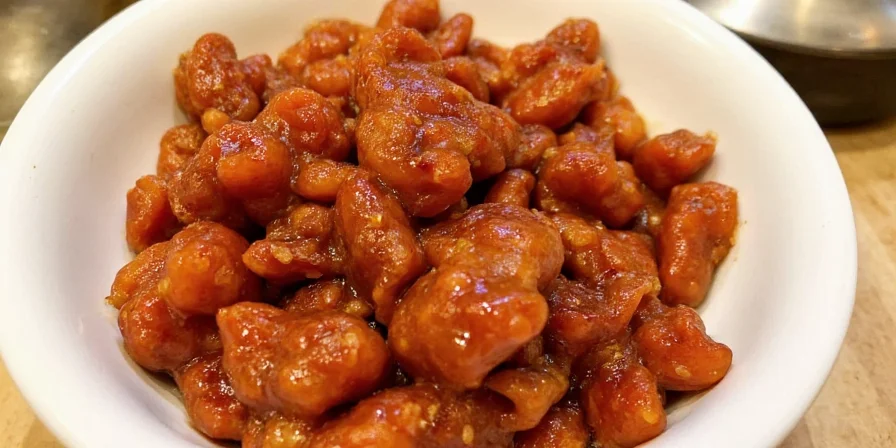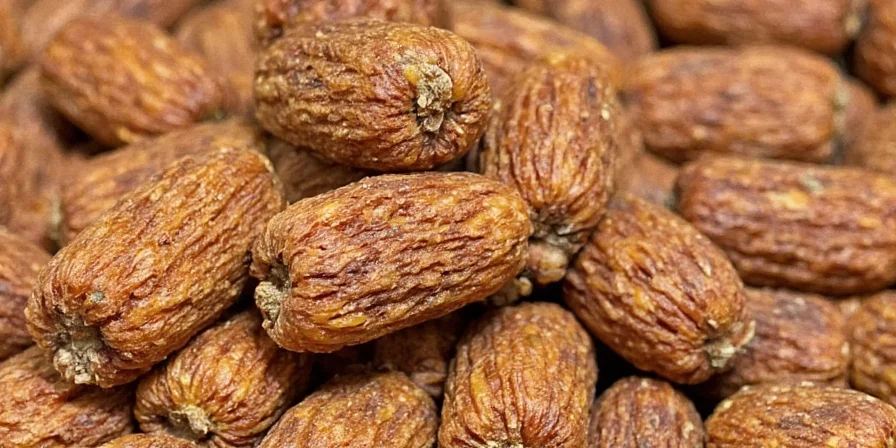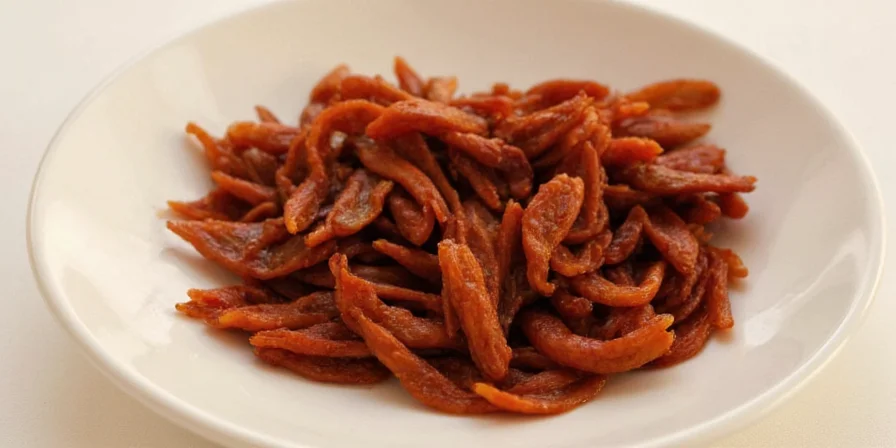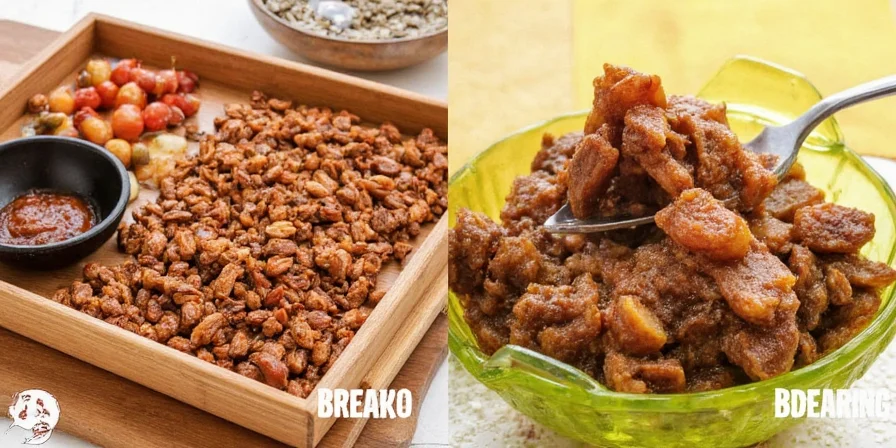
Table of Contents
- Why Tamarind Transforms Flavor Chemistry
- Beyond the Pod: Tamarind's Botanical Identity
- Decoding Tamarind's Flavor Architecture
- The Tartaric Acid Advantage: Why Heat Preserves Sourness
- 5 Precision Cooking Techniques for Flavor Control
- Chef-Level Flavor Engineering Methods
- Spice Synergy Matrix for Complex Profiles
- Health Research: Separating Tradition from Evidence
- Longevity Science: Optimizing Shelf Stability
- The Essential Flavor Catalyst Argument
Why Tamarind Transforms Flavor Chemistry
If your taste receptors had a preference hierarchy, tamarind would rank among top-tier flavor catalysts. Unlike single-note acids, its dual-sweet-sour profile creates flavor dimensionality in dishes from Thai tom yum to Mexican aguas frescas. This article reveals why molecular behavior—not just taste—makes tamarind irreplaceable for culinary professionals and serious home cooks seeking authentic depth.

We'll dissect tamarind's unique chemical properties, precise usage protocols, and evidence-based applications—moving beyond superficial 'sour ingredient' descriptions to actionable mastery. Discover why leading chefs treat it as flavor architecture rather than mere seasoning.
Beyond the Pod: Tamarind's Botanical Identity
Tamarind (Tamarindus indica) originates from tropical Africa but evolved through Asia's culinary ecosystems into a global flavor cornerstone. Its pod structure contains pulp with concentrated tartaric acid—the only common fruit acid stable at high temperatures—which fundamentally distinguishes it from citric-based alternatives.
| Form | Molecular Characteristics | Precision Application |
|---|---|---|
| Raw Pods | Intact seed structure preserves enzymatic activity | Slow-infusion broths requiring gradual flavor release |
| Block Paste | Concentrated pulp with minimized oxidation | Dishes needing immediate, consistent sour impact |
| Liquid Concentrate | Pre-hydrolyzed compounds for instant integration | Cold applications like dressings or beverages |
Decoding Tamarind's Flavor Architecture
Tamarind operates through three simultaneous flavor channels: rapid tartaric acid activation (sour), slow caramelization of natural sugars (sweet), and umami precursor release during cooking. This tripartite behavior creates evolving flavor trajectories impossible with vinegar or citrus.
- Sour Dynamics: Tartaric acid maintains pH stability during prolonged cooking, unlike citric acid which degrades
- Sweet Evolution: Natural sugars caramelize at 160°C, creating depth without added sweeteners
- Umami Catalyst: Glutamic acid precursors activate during simmering, enhancing savory perception

The Tartaric Acid Advantage: Why Heat Preserves Sourness
Here's the overlooked science: Tamarind's tartaric acid has a higher thermal decomposition point (171°C) than citric acid (175°C sublimation but functional degradation at 100°C+). This means when added early to curries or stews, its sourness doesn't dissipate—it integrates molecularly with proteins and fats. Chefs in Karnataka intentionally add tamarind at the oil-heating stage to create flavor-binding compounds that citrus cannot replicate. This chemical stability is why tamarind-based sauces deepen in complexity over hours while lemon-based ones turn bitter.
5 Precision Cooking Techniques for Flavor Control
- Temperature-Timed Addition: For layered sourness, add raw pods during oil tempering (120°C); for bright acidity, stir in concentrate post-boil (85°C)
- Acid-Sweet Calibration: Use 1:3 tamarind-to-sugar ratio when balancing fatty ingredients—never equal parts
- Protein Binding: Marinate meats in diluted paste 2 hours pre-cook to activate enzymatic tenderizing
- Cold Emulsification: Whisk concentrate into dressings before oil to prevent separation
- Residual Heat Activation: Remove from flame before final tamarind addition to preserve volatile aromatic compounds

Chef-Level Flavor Engineering Methods
Professional kitchens leverage tamarind's chemical properties through controlled reactions:
- Maillard Catalyst: Add paste during initial searing to accelerate browning reactions in meats
- Smoke Infusion: Burn tamarind seeds to create smoked acid compounds for dry rubs
- Enzyme Preservation: Freeze puree in ice cube trays to maintain enzymatic activity for future use
- Flavor Layering: Combine with tamarind vinegar (fermented 60+ days) for multi-dimensional sour notes
Spice Synergy Matrix for Complex Profiles
Tamarind's molecular structure bonds selectively with specific compounds. This table reveals why certain pairings create emergent flavors:
| Spice | Molecular Interaction | Optimal Ratio |
|---|---|---|
| Chili Powder | Tartaric acid amplifies capsaicin solubility | 1:4 (tamarind:chili) |
| Cumin | Binds with thujone compounds to mellow earthiness | 1:2 (equal parts) |
| Ginger | Zingiberene compounds stabilize at pH 3.2-3.5 | 3:1 (tamarind:ginger) |
| Garlic | Prevents allicin degradation during cooking | 2:1 (tamarind:garlic) |
| Cinnamon | Forms soluble complexes with cinnamaldehyde | 4:1 (tamarind:cinnamon) |
Health Research: Separating Tradition from Evidence
Current studies show promising but preliminary results. Tamarind contains polyphenols with demonstrated antioxidant activity in vitro, though human trials remain limited. Key evidence-based insights:
- Digestive Support: Fiber content may aid digestion, but laxative claims lack robust clinical validation
- Metabolic Research: Animal studies suggest potential blood sugar modulation; human data is inconclusive per 2025 NIH review
- Nutrient Density: Contains magnesium and potassium, but concentrations vary significantly by preparation method
- Important Note: No credible evidence supports 'detox' claims. Consult healthcare providers for medical conditions.

Longevity Science: Optimizing Shelf Stability
Tamarind's natural acidity creates self-preserving properties when stored correctly:
- Raw Blocks: Store below 25°C with 60% humidity—enzymatic activity remains stable for 18 months
- Paste/Concentrate: Refrigeration prevents mold but degrades tartaric compounds after 9 months
- Freezing Protocol: Flash-freeze in 30g portions (-18°C) to maintain molecular integrity for 24 months
The Essential Flavor Catalyst Argument
Tamarind transcends 'sour ingredient' status through unique biochemical properties that actively engineer flavor complexity. Its temperature-stable acidity, protein-binding capacity, and enzymatic interactions create culinary outcomes unachievable with substitutes. For serious cooks seeking authentic depth in global cuisines—from balancing Thai curries to perfecting Mexican moles—understanding tamarind's molecular behavior is non-negotiable. This isn't just another spice; it's a flavor architecture tool that transforms ingredient relationships at the chemical level.

Core Insight:
Mastery comes from recognizing tamarind as a dynamic flavor catalyst—not a static ingredient. When applied with precision timing and ratio control, it unlocks layered taste experiences that define authentic regional cooking.
Frequently Asked Questions About Tamarind
Why doesn't tamarind lose sourness during long cooking like lemons?
Tamarind contains tartaric acid with a higher thermal decomposition point (171°C) than citric acid. This allows it to maintain pH stability during prolonged simmering, creating evolving flavor complexity rather than dissipating.
Can I substitute vinegar for tamarind in recipes?
Vinegar lacks tamarind's natural sugars and umami precursors. For approximation, mix 2 parts rice vinegar with 1 part molasses and a dash of soy sauce—but expect reduced complexity and heat instability.
Does tamarind interact with medications?
Preliminary research suggests potential interactions with blood pressure medications due to potassium content. Consult your physician before dietary changes if managing hypertension.
How do I test tamarind quality before buying?
Press the block: high-quality paste yields slightly but reforms shape. Avoid products with crystallized sugar (indicates improper storage) or excessive moisture (promotes mold). Pods should have brittle shells that crack when bent.











 浙公网安备
33010002000092号
浙公网安备
33010002000092号 浙B2-20120091-4
浙B2-20120091-4